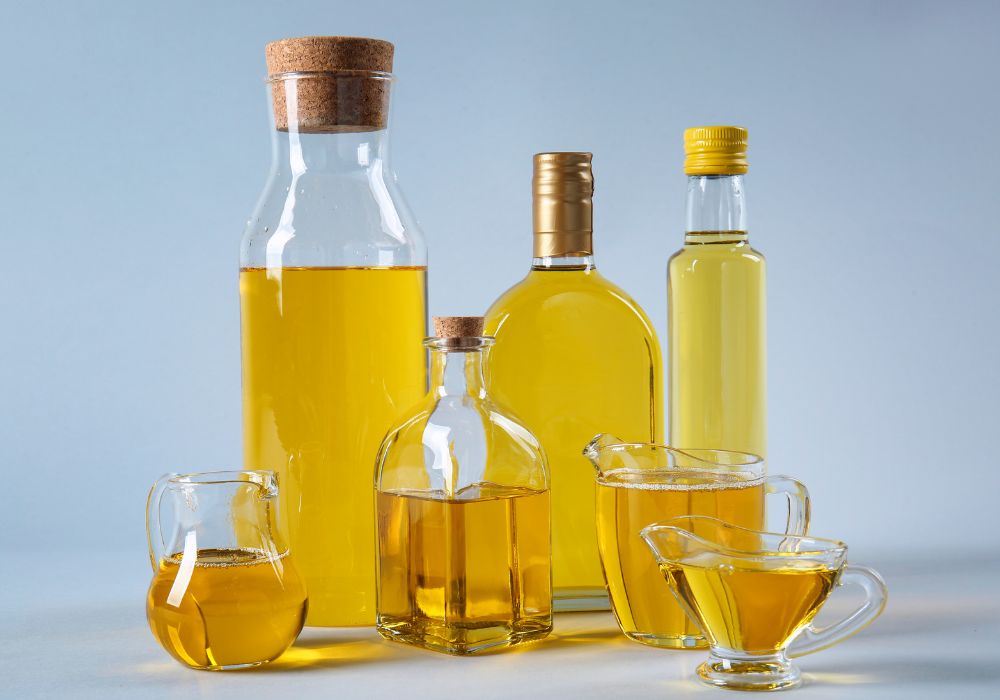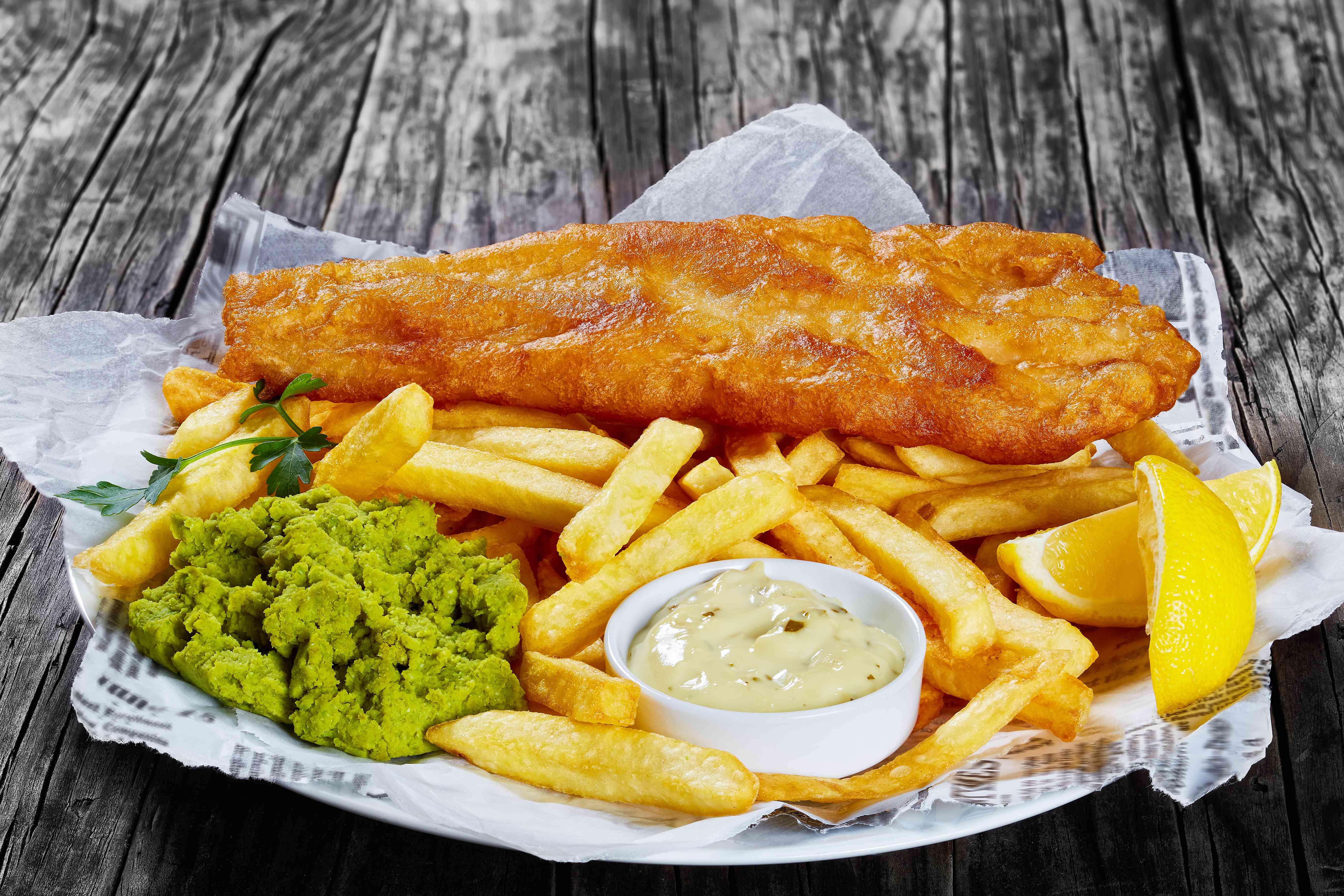In the realm of culinary arts, the selection of cooking oil can significantly influence the flavour, texture, and nutritional value of a dish. With so many options available, each boasting distinct properties, understanding the characteristics of different cooking oils is crucial for achieving desired results in the kitchen. From versatile palm oil to exotic sesame oil, let’s look into different types of cooking oils, the best type of cooking oil for different dishes, and explore when to use each one.
Palm Oil
Palm oil, extracted from the fruit of oil palms, is known for its rich, reddish hue and distinct flavour profile. It is a popular choice in many cuisines, particularly in tropical regions where it is abundantly produced, and has become the cooking oil of choice in the UK too, especially for restaurants, food trucks, and chippies. Due to its high smoke point and neutral flavour, palm oil is ideal for high-heat cooking methods such as frying and sautéing. Its stability at high temperatures makes it a preferred option for deep-frying, imparting a crispy texture to foods while retaining their moisture.
It’s also one of the healthiest oils to use for cooking, as it boasts a natural abundance of antioxidants such as tocopherols and Vitamin E, renowned for their potential in combating illnesses like cancer. Notably, Vitamin E in significant amounts offers anti-aging effects, effectively staving off wrinkles and fine lines. Moreover, palm oil’s health benefits extend to a reduced risk of heart disease. Its capacity to lower levels of LDL (bad cholesterol) while elevating HDL (good cholesterol) is just one facet of its many heart-protective properties.
Vegetable Oil
Vegetable oil is a generic term used to describe blends of various plant-derived oils, such as soybean, sunflower, canola, and palm oils. This versatile oil has a neutral flavour and a high smoke point, making it suitable for a wide range of cooking applications, including frying, baking, and salad dressings. Its affordability and widespread availability make it a pantry staple in many households – and it can be healthy too depending on what oils are used to produce the blend.
Avocado Oil
Derived from the flesh of ripe avocados, avocado oil is prized for its mild flavour and high smoke point. With its subtle buttery taste and rich texture, it is well-suited for sautéing, grilling, and roasting. Avocado oil also contains monounsaturated fats, which are beneficial for heart health, making it a nutritious choice for cooking.
Canola Oil
Extracted from the seeds of the canola plant, canola oil is renowned for its light flavour and versatility. It has a relatively high smoke point along with a neutral taste, making it suitable for frying, baking, and salad dressings. Canola oil is also low in saturated fat and rich in omega-3 fatty acids, making it a heart-healthy option for cooking.
Coconut Oil
Coconut oil, derived from the meat of mature coconuts, has a distinctive flavour and aroma. With its high saturated fat content, coconut oil solidifies at room temperature and has a relatively low smoke point, making it unsuitable for high-heat cooking methods. However, its sweet, nutty flavour also makes it a popular choice for baking, stir-frying, and adding depth to curries and desserts.
Corn Oil
Corn oil, extracted from the germ of corn kernels, is valued for its mild flavour and high smoke point. It is commonly used in frying, baking, and salad dressings, thanks to its ability to withstand high temperatures without breaking down. Corn oil is also rich in polyunsaturated fats and vitamin E, making it a healthy choice for cooking and baking.
Grapeseed Oil
Grapeseed oil is extracted from the seeds of grapes and has a light flavour and high smoke point. Its neutral taste makes it an excellent choice for frying, grilling, and sautéing, while its high levels of polyunsaturated fats contribute to its heart-healthy properties. Grapeseed oil is also commonly used in salad dressings and marinades, adding a subtle fruity note to dishes.
Nut Oils
Nut oils, such as walnut oil, almond oil, and hazelnut oil, are prized for their rich, nutty flavours and delicate textures. These oils are best used as finishing oils, drizzled over salads, pastas, and grilled vegetables to add depth and complexity to dishes. Due to their low smoke points, nut oils are not suitable for high-heat cooking methods but excel in enhancing the flavour of dishes when used as a finishing touch.
Olive Oil
Olive oil, a staple in Mediterranean cuisine, is known for its robust flavour and numerous health benefits. With its distinct fruity taste and relatively low smoke point, extra virgin olive oil is best suited for drizzling over salads, bread, and cooked dishes to add flavour and depth. Light olive oil, with its milder flavour and higher smoke point, is ideal for sautéing, frying, and baking, making it a versatile option for everyday cooking.
Sunflower Oil
Sunflower oil, extracted from sunflower seeds, is valued for its mild flavour and high smoke point. Its neutral taste and light texture make it suitable for frying, baking, and salad dressings. Sunflower oil is also rich in vitamin E and omega-6 fatty acids, making it a healthy choice for cooking and baking.
Sesame Oil
Sesame oil, derived from sesame seeds, is prized for its rich, nutty flavour and aroma. It is commonly used in Asian cuisines as a flavouring agent and finishing oil, adding depth and complexity to stir-fries, marinades, and dressings. Due to its low smoke point, sesame oil is best used in moderation and added towards the end of cooking to preserve its delicate flavour.
What is the best type of cooking oil?
Palm oil stands out as a versatile and valuable cooking oil with a wide range of benefits, making it a top choice for culinary enthusiasts worldwide. When sourced sustainably, palm oil not only offers exceptional health advantages but also possesses desirable cooking properties, including a high smoke point along with a neutral flavour profile.
First and foremost, sustainable palm oil is rich in beneficial nutrients, including tocotrienols and Vitamin E, which are potent antioxidants known for their ability to combat oxidative stress and reduce the risk of chronic diseases such as cancer. These antioxidants play a vital role in maintaining overall health and well-being, making palm oil an excellent addition to a balanced diet.
Moreover, palm oil has a high smoke point, typically ranging from 190°C to 230°C, depending on its refining process. This high smoke point makes palm oil ideal for various cooking methods, including frying, sautéing, and roasting, as it can withstand high temperatures without breaking down or producing harmful compounds. As a result, dishes cooked with palm oil retain their texture and flavour while minimising the risk of burning.
Another advantage of palm oil is its neutral flavour profile, which allows it to complement a wide range of ingredients and cuisines without overpowering the dish’s natural flavours. Whether used in savoury dishes like stir-fries and curries or sweet treats like baked goods and desserts, palm oil blends seamlessly into recipes, enhancing their richness and mouthfeel without altering their taste.
In terms of usage, sustainable palm oil can be incorporated into various culinary creations, adding depth and complexity to dishes across different cuisines. For example, palm oil can be used as a frying oil for crispy fried foods like chicken tenders, French fries, and spring rolls, thanks to its high smoke point and excellent frying properties. Its stability at high temperatures ensures that fried foods achieve a golden, crunchy exterior while remaining moist and tender on the inside.
Additionally, palm oil can be used as a cooking oil for sautéing vegetables, searing meats, and preparing sauces and marinades, imparting a rich, buttery flavour to the dish. Its neutral taste allows the flavours of other ingredients to shine through, making it a versatile choice for a wide range of savoury dishes.
Furthermore, palm oil can be incorporated into baked goods such as cakes, cookies, and pastries, where its creamy texture and subtle flavour enhances the taste and texture of the final product. Its ability to cream with sugar and emulsify with other ingredients makes it an excellent choice for achieving moist, tender baked goods with a soft crumb and golden crust.
As you can see, palm oil emerges as a superior cooking oil due to its myriad health benefits, high smoke point, and neutral flavour profile. Whether used for frying, sautéing, or baking, palm oil adds richness, depth, and texture to a wide range of culinary creations, making it an indispensable ingredient in any kitchen.
In conclusion, the selection of cooking oil plays a crucial role in determining the flavour, texture, and nutritional values to dishes. From the rich, earthy taste of olive oil to the delicate aroma of sesame oil, each type of oil brings its own unique characteristics to the table. By understanding the properties of different cooking oils and knowing when to use them, you can elevate your culinary creations and unlock a world of flavours.
Frymax –Trusted Supplier of All-natural Sustainable Palm Oil in the UK
Join the ranks of culinary professionals who have trusted Frymax, the fryer’s favourite cooking oil for over six decades! As suppliers of deep fat fryer oil to establishments across the UK, we take pride in delivering excellence. Frymax is your go-to solution – a high-quality, 100% natural, and sustainable palm oil perfect for deep frying, containing less than one percent trans fatty acids.
Our RSPO certified oils are not only pure but also free of additives, allergens, GM ingredients, and hydrogenated oils, making them suitable for every kitchen. We’ve upheld our exceptional quality for 60 years, earning the loyalty of customers who’ve been with us for over a quarter-century.
Contact us for more information or Join us today as a Frymax member, and unlock exclusive content, expert frying advice, and exciting competition opportunities! Your culinary journey deserves the best.






